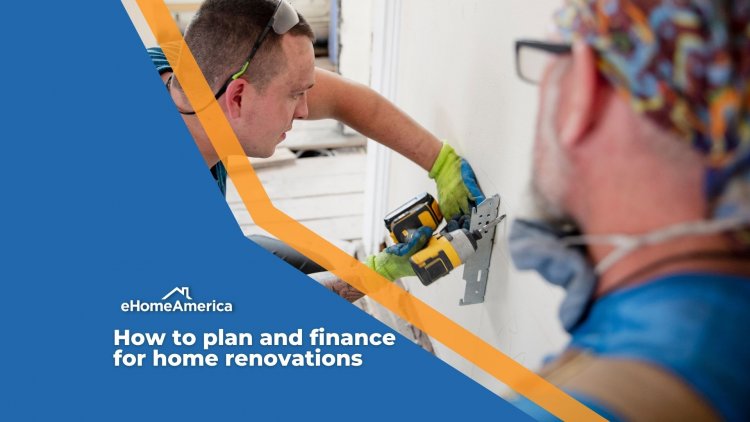How to plan and finance for home renovations

Once you become a homeowner, it’s easy to get the itch to redesign and redecorate the entire home. It’s YOURS! You finally have your own space and can do whatever you want with it. Before getting too far ahead of yourself, it’s wise to sit down and map out exactly what it is you are wanting to change. Figuring out what you want or need to change helps you understand the financial situation of what you are dreaming of and if you are able to afford it.
Luckily, there are plenty of options to assist with home renovations. Oftentimes those renovations are actually needed and not just wanted. The government and other institutions have identified this need and in an effort to maintain good quality of life as well as maintaining well manicured neighborhoods, there are loans available for those seeking them.

Cash-Out Refinance
This almost sounds like a trick, right? You get cash to renovate? Good news, it isn’t a trick.
This loan requires you to refinance to a new mortgage loan with a bigger balance than what you currently owe. Then you pay off your existing mortgage and keep the remaining cash.
The cash you received is from your home equity, and is what you would use for your home improvements.
The best time for this loan is when you’re able to refinance to a lower interest rate than your current one. There’s also a chance you’ll be able to adjust the term of the loan so you would be able to pay off the loan sooner. If you’re reading this in the summer of 2021, we have good news. Rates are very low and is a great time for refinancing.
Cons: Cash-out refinance loans have higher closing costs and will apply to the entire amount of the loan instead of just the cash.
FHA 203(k) Rehab Loan
The FHA 203(k) Rehab Loan Combines two loans into one. This means that you bundle your mortgage and home improvement costs into one without doubling a mortgage or closing costs.
These are common when you are purchasing a fixer upper and it is evident that there will be renovations in your near future.
These are government backed and accept low down payments as well as lower credit scores, nor do you need to be a first time home buyer.
Home Equity Loan (HEL)
If you have lived in your home for a long enough time to build up substantial equity, this would be the loan for you. This is typically the loan for those who are looking for funds for a big one-time project.
With a HEL, you are borrowing against the equity you’ve built up over time.
How to calculate your equity:
Assess your home’s value - the outstanding balance due on your existing mortgage loan = your equity
With a low and fixed interest rate, this loan is perfect for a large sum of money and it’s also eligible to be tax deductible.
One of the cons to the Home Equity Loan is that it adds a second monthly mortgage payment if you still owe money on the original mortgage.

Home Equity Line of Credit (HELOC)
The Home Equity Line of Credit is just like an HEL but works more as a credit card.
You’re able to borrow an approved amount, pay it off and then borrow from it again.
One of the differences between a HELOC and a HEL is that the HELOC has adjustable interest rates over the course of the loan while HEL has a fixed interest rate.
This differs from your average credit card in the way that you only pay interest on the amount you borrowed from the line of credit vs paying interest on the entire line of credit.
This loan is very flexible and a good option for lower cost projects that will happen over a long period of time. The money is there when you need it, and the line of credit is available for up to 10 years.
USDA Loan
The USDA also offers an option for those who would like to or need to update/repair their home.
This program can also combine a loan and a grant for increased amounts. The USDA loan is perfect for those in an older community where the standard of housing is very low and their options are bleak whether they stayed in their current home or left.
The applicant is required to have steady income, but you cannot make more than 15% of the median income in your county. The property for this loan needs to be your primary residence and not a rental home or a second home.
In Conclusion
It’s easy to think you need to take out a personal loan or use up your savings to change the way your home looks. As we just discussed, that is not the case! If you are interested in being fully prepared and informed for what your next steps should be after buying a home or just simply want to be more informed, the eHome America Post Purchase course is a great resource. Learn about financial planning for your new home’s expenses, expected maintenance costs, tax benefits, and when and who to contact if financial hardship happens unexpectedly.

What's Your Reaction?
















